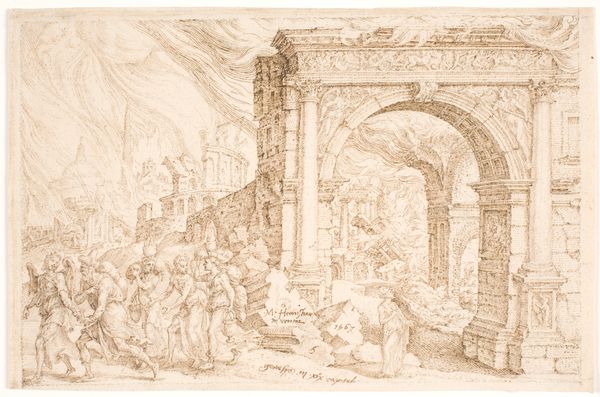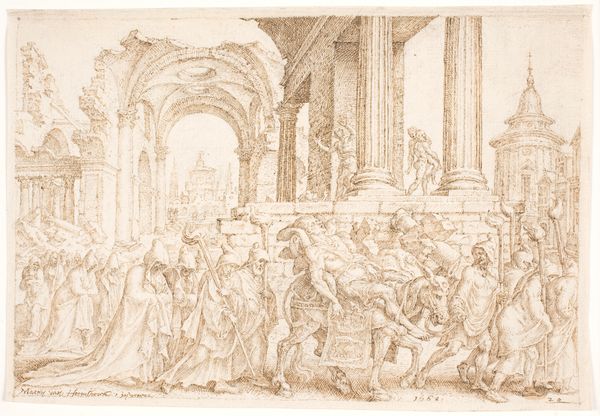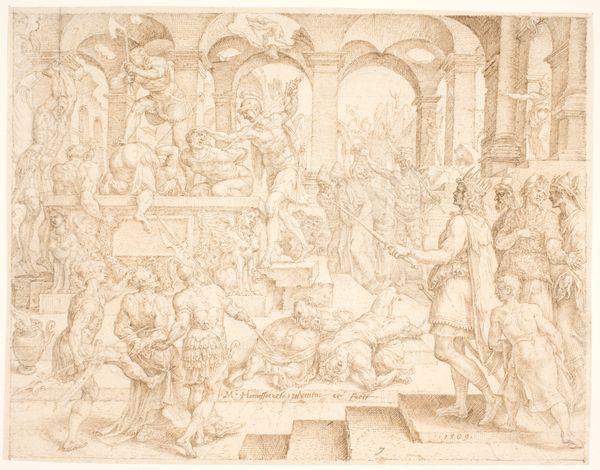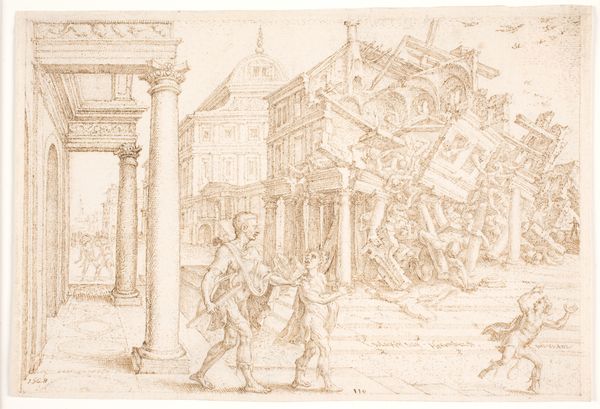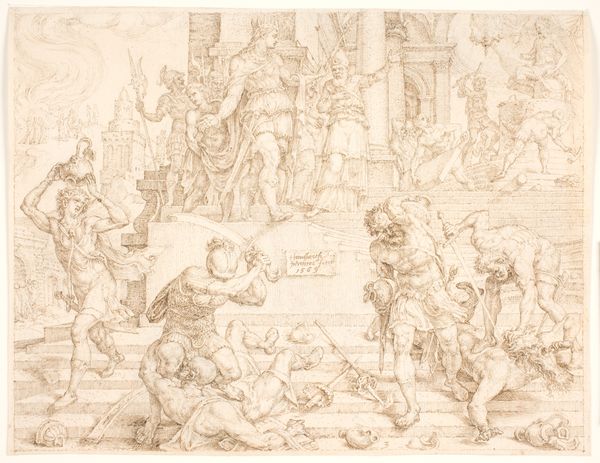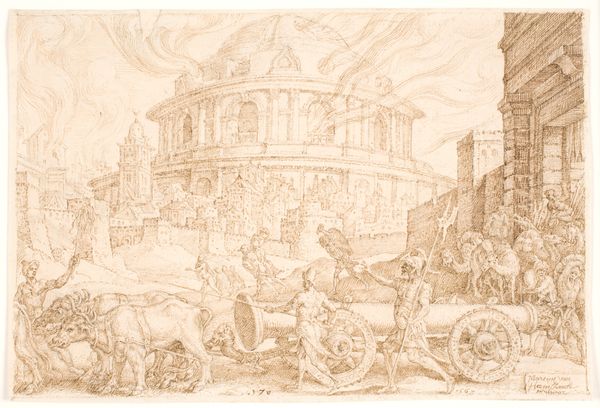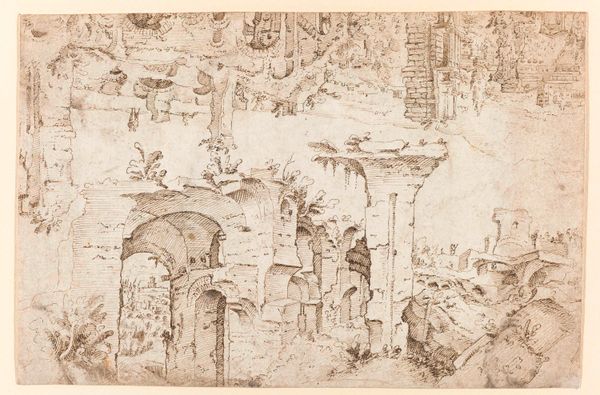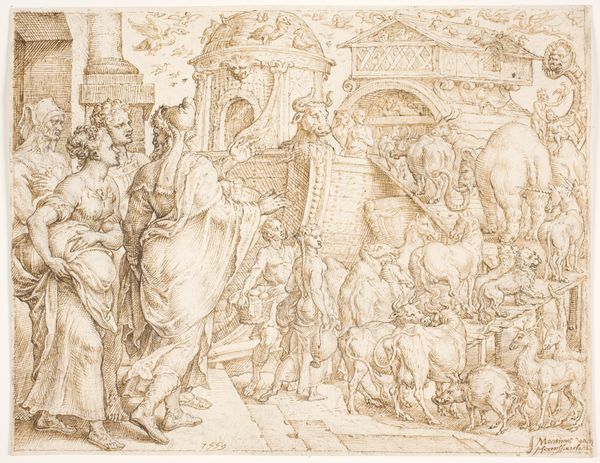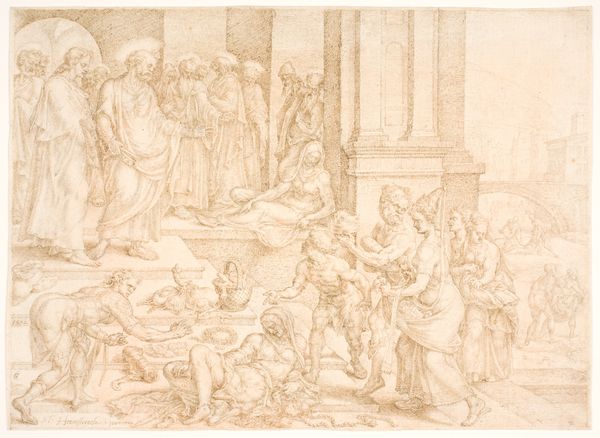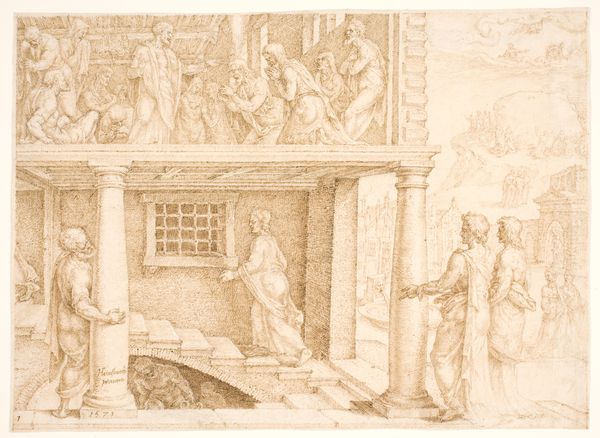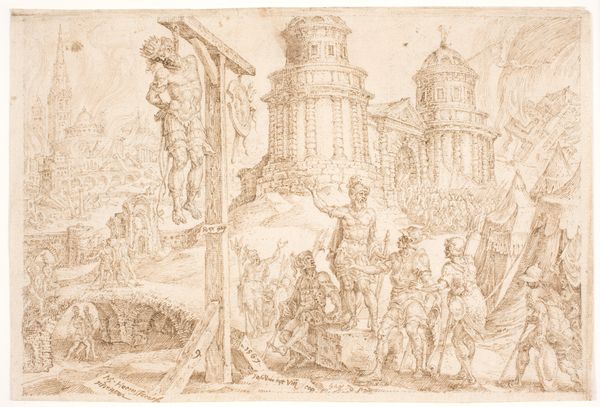
drawing, paper, ink
#
drawing
#
narrative-art
#
landscape
#
figuration
#
paper
#
11_renaissance
#
ink
#
history-painting
#
northern-renaissance
Dimensions: 132 mm (height) x 204 mm (width) (bladmaal)
Curator: It’s an intriguing composition, wouldn’t you say? A feeling of ruin pervades, yet there's an underlying elegance in the structure. Editor: Absolutely. Let's delve into Maarten van Heemskerck's 1567 ink drawing on paper, “Ham Mocking Noah," currently housed here at the SMK. Heemskerck masterfully uses the linear quality of ink to guide the viewer's eye. Curator: And look at the interplay of light and shadow achieved purely through line density! Notice, however, how the classical architecture serves not just as background. The broken columns, the crumbling archways…it's a visual commentary on fallen empires. Editor: A commentary possibly reflective of the artist's socio-political environment at the time of creation, no? One ponders what impact contemporary views on colonialism had on his work, particularly with this Biblical story about power and family dynamics. The story of Ham, seeing his father Noah drunk and naked, being cursed is presented in a context of Roman ruins. The choice of this setting certainly begs further questioning. Curator: Indeed, the selection of the Roman style is significant, setting up this supposed downfall as a direct connection to historical imperial decay. From a Formalist point of view, that framing—those verticals and horizontals fractured by time— emphasizes instability, narratively and visually. Editor: Moreover, it's essential to consider the paper itself. The cost of materials and the accessibility of such detailed draughtsmanship signal both a patron class interested in such moralizing scenes and Heemskerck's own level of skill. The lines are carefully rendered suggesting extensive pre-planning. The laboriousness of production surely reinforces the drawing's thematic gravitas! Curator: Certainly, labor, craft, all important considerations. Still, my attention returns to the expressiveness achieved within those constraints. The bodies—the torsion of Ham, the inebriated stupor of Noah. Line alone conveys weight, emotion, and profound discomfort. The figures emerge from the landscape. The ink on paper has captured something enduring. Editor: It leaves us considering the relationship between power structures depicted in biblical tales with those in the society where the work was made. That tension resonates centuries later. Curator: Agreed. There is certainly much to unpack and examine through multiple lenses.
Comments
No comments
Be the first to comment and join the conversation on the ultimate creative platform.
